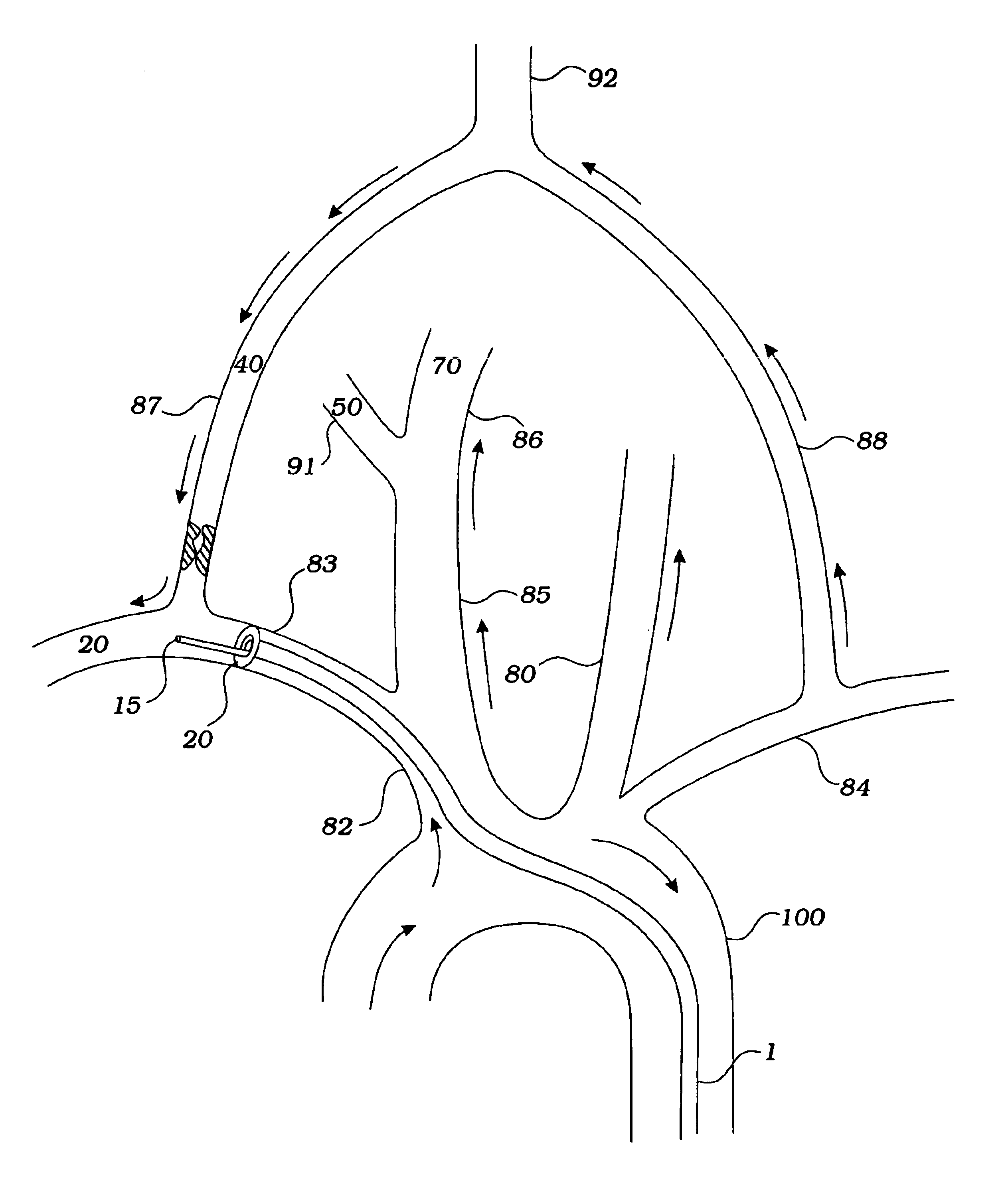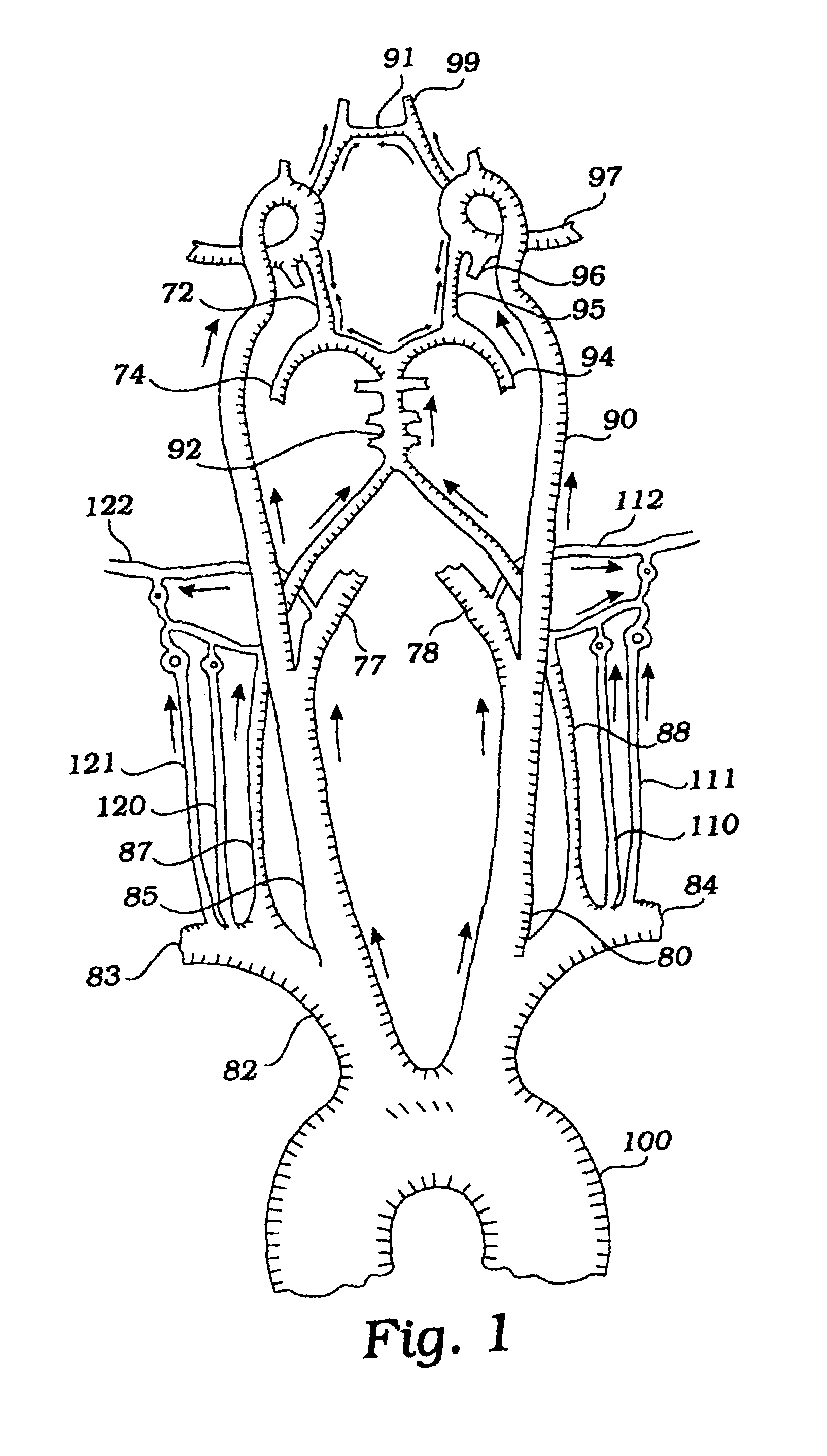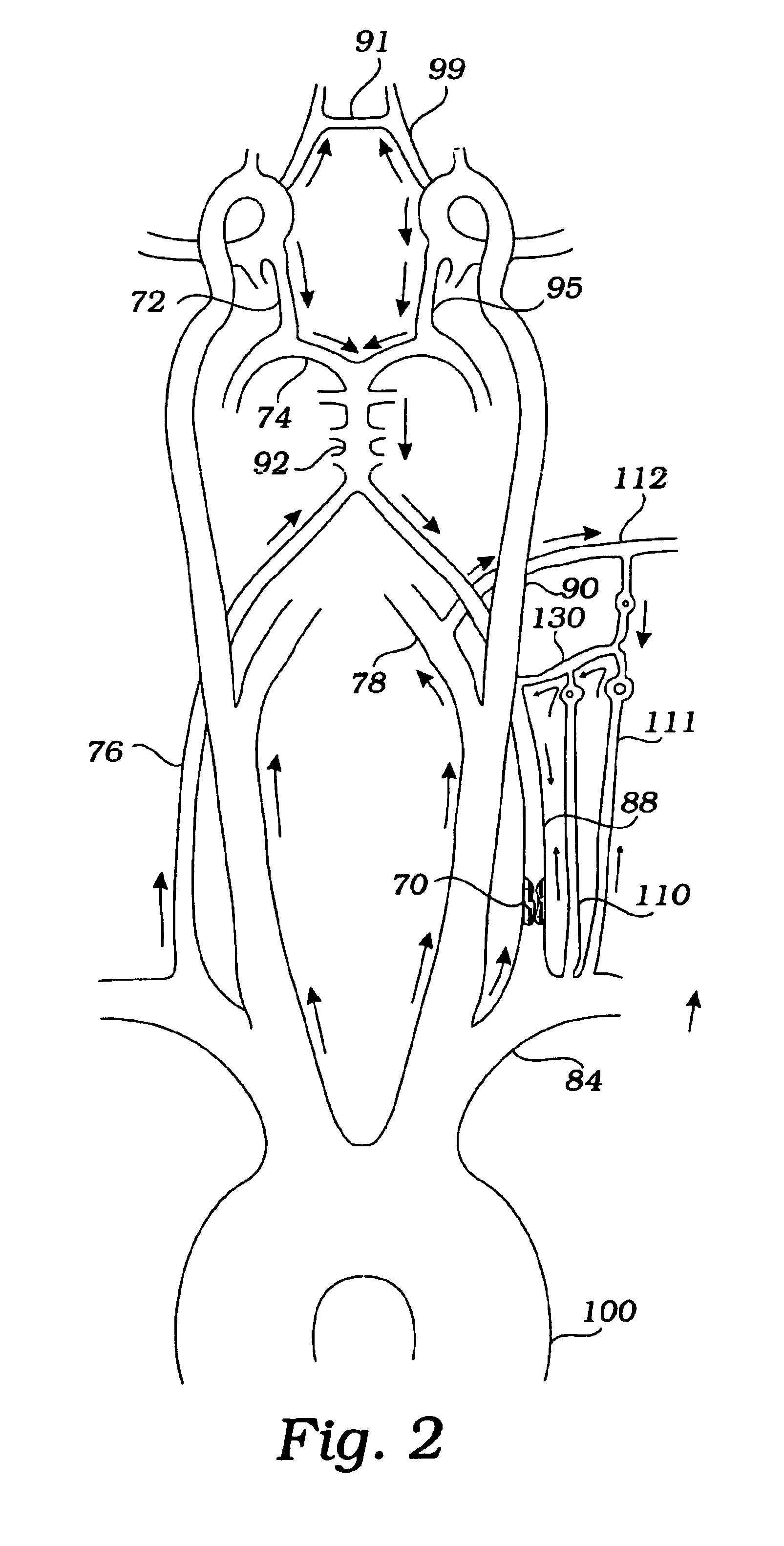Devices and methods for preventing distal embolization from the vertebrobasilar artery using flow reversal
a technology of vertebrobasilar artery and flow reversal, which is applied in the field of extracranial devices, can solve the problems of coma or death, combination of symptoms, and infarction in these areas of the brain that can produce dire consequences, and achieve the effects of avoiding distal embolization, minimizing blood loss, and eliminating the need for systemic anticoagulation
- Summary
- Abstract
- Description
- Claims
- Application Information
AI Technical Summary
Benefits of technology
Problems solved by technology
Method used
Image
Examples
Embodiment Construction
[0048]The cerebral circulation is regulated in such a way that a constant total cerebral blood flow (CBF) is generally maintained under varying conditions. For example, a reduction in flow to one part of the brain, such as in stroke, may be compensated by an increase in flow to another part, so that CBF to any one region of the brain remains unchanged. More importantly, when one part of the brain becomes ischemic due to a vascular occlusion, the brain compensates by increasing blood flow to the ischemic area through its collateral circulation via the Circle of Willis.
[0049]FIG. 1 depicts normal cerebral circulation and collateral blood flow in the Circle of Willis and the posterior circulation. Aorta 100 gives rise to right brachiocephalic trunk 82, left common carotid artery (CCA) 80, and left subclavian artery 84. The brachiocephalic artery further branches into right common carotid artery 85 and right subclavian artery 83. The left CCA gives rise to left internal carotid artery (...
PUM
 Login to View More
Login to View More Abstract
Description
Claims
Application Information
 Login to View More
Login to View More - R&D
- Intellectual Property
- Life Sciences
- Materials
- Tech Scout
- Unparalleled Data Quality
- Higher Quality Content
- 60% Fewer Hallucinations
Browse by: Latest US Patents, China's latest patents, Technical Efficacy Thesaurus, Application Domain, Technology Topic, Popular Technical Reports.
© 2025 PatSnap. All rights reserved.Legal|Privacy policy|Modern Slavery Act Transparency Statement|Sitemap|About US| Contact US: help@patsnap.com



